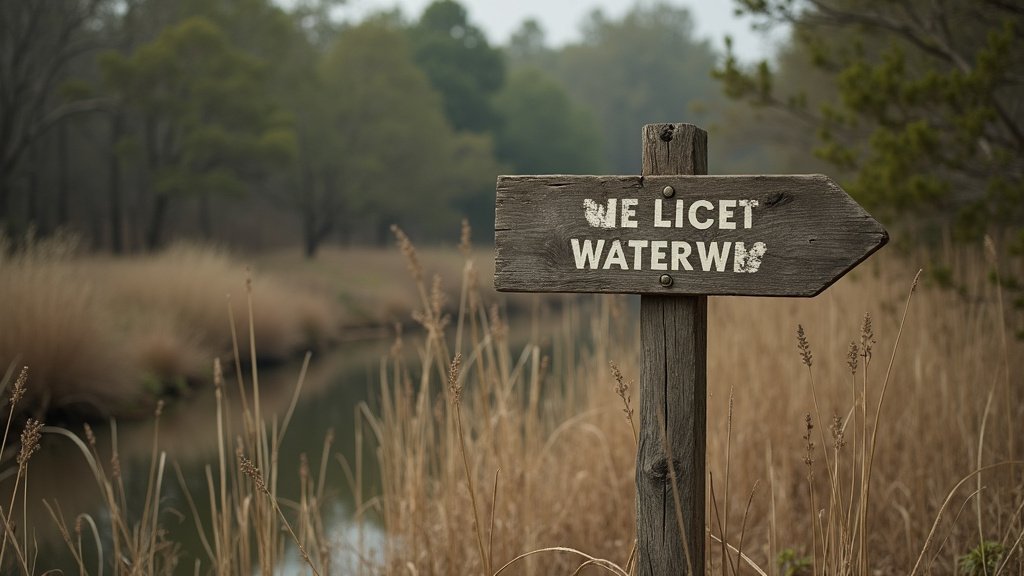In a protracted legal struggle that highlights the complex intersection of private property rights and public access in Texas, a contentious dispute over a popular East Texas waterway known as The Cutoff continues to unfold. At the heart of the conflict is a fence erected by a private landowner, which has effectively blocked access to a body of water cherished by generations of local residents for fishing, hunting, and outdoor recreation. This ongoing news story, a top trending topic in Texas, involves multiple lawsuits, regulatory tangles, and the intervention of influential state lawmakers, underscoring the broader implications for public access rights across the state.
The Cutoff: A Legacy of Public Access Under Siege
The Cutoff, a scenic stretch of water in Henderson County, is a former branch of the Trinity River that was severed from the main channel by a levee project in the 1920s. For decades, it has served as a vital recreational resource, offering access to approximately 12 miles of the original riverbed and providing a peaceful escape for families and outdoor enthusiasts. However, this long-standing tradition of public use was dramatically altered in 2022 when Phillip Surls, owner of the surrounding land through Iron River Ranch, erected a fence near the primary entry point off FM 1667. This action immediately galvanized a local group, who formed the nonprofit organization ‘Save the Cutoff’ to challenge the obstruction and fight for the restoration of public access.
A Labyrinth of Lawsuits and Rulings
The erection of the fence triggered a series of legal battles. Save the Cutoff has filed multiple lawsuits, aiming to reclaim access to the waterway. One legal challenge targets Phillip Surls directly, alleging violations of the Clean Water Act. This suit stems from accusations that Surls used dredged material from the riverbed for the fence’s construction without the necessary permits from the U.S. Army Corps of Engineers, which has reportedly issued a violation for the dredging.
Simultaneously, Save the Cutoff has pursued legal action against Henderson County and Commissioner Wendy Spivey, contending that the county failed to maintain an alternative road that could provide public access to The Cutoff. These efforts have met with mixed judicial results. A district judge recently ruled that The Cutoff is not a navigable waterway, a decision that, if upheld, would significantly undermine public access claims. While Save the Cutoff has vowed to appeal this ruling, their attempts to bypass lower court decisions have faced setbacks, including the Texas Supreme Court’s refusal to hear an appeal in the case involving Henderson County.
Navigating Texas Water Law: Navigability and Public Roadways
The legal fight over The Cutoff is deeply rooted in Texas water law, which distinguishes between navigable and non-navigable waterways. Under Texas statutes and common law, navigable streams are considered public highways, with the state holding the riverbed in trust for the public up to the ordinary high-water mark. This public right allows for activities like boating, fishing, and wading, regardless of adjacent private land ownership.
A waterway is generally deemed navigable in Texas if it is “navigable in fact”—capable of serving as a common highway for trade or travel in its ordinary state—or “navigable by statute,” meaning it averages at least 30 feet in width from bank to bank. Crucially, public access to navigable waters must typically be obtained through public property, such as a public road crossing or a park. Fencing or other obstructions placed within a public road’s right-of-way that impede public passage are considered illegal. The outcome of the current dispute hinges on the legal determination of The Cutoff’s navigability and the landowner’s right to obstruct access via public thoroughfares.
Political Currents and Powerful Interests
The conflict has also drawn in state politicians, suggesting that powerful interests are aligned with the landowner. In a move that has fueled ‘Save the Cutoff’s’ frustration, State Senator Robert Nichols and Representatives Keith Bell and Cody Harris—all representing East Texas districts—sent a letter to the Texas Department of Transportation (TxDOT). The letter urged TxDOT to grant Phillip Surls control of the mile-long stretch of FM 1667 that provides access to The Cutoff. This intervention has been interpreted by access advocates as an attempt to leverage political influence to support the landowner’s position.
In response to these developments, the Henderson County Commissioners Court has voted to express interest in taking control of the FM 1667 road segment themselves. This action, if successful, could ensure that the access point remains open to the public, despite the landowners’ claims and the legislative advocacy on their behalf. TxDOT is reportedly exploring various options for the road’s future, including transferring ownership to either the landowner or the county.
Broader Water Concerns in East Texas
The legal battle over The Cutoff is not an isolated incident but reflects a broader trend of increasing water-related disputes and resource management challenges in Texas. Recent news from East Texas highlights other contentious water issues, including legislative efforts to delay a Dallas investor’s plans to export large volumes of groundwater from the region. Furthermore, debates surrounding the state’s water infrastructure needs and funding, along with legal actions against municipal water districts regarding water sales, underscore the high stakes involved in managing Texas’s vital water resources. These trending discussions add a layer of complexity to the ongoing fight for access to The Cutoff, as Texans grapple with how to balance development, conservation, and public enjoyment of natural resources.
An Unresolved Fight for Access
As the legal and political maneuvering continues, the future of public access to The Cutoff remains uncertain. The outcome of this high-profile news story could set precedents for how similar disputes are handled across Texas, impacting the delicate balance between private property rights and the public’s right to enjoy the state’s waterways. Advocates for public access remain steadfast, committed to preserving this cherished East Texas resource for present and future generations, while the legal battles continue to wind their way through the courts.






